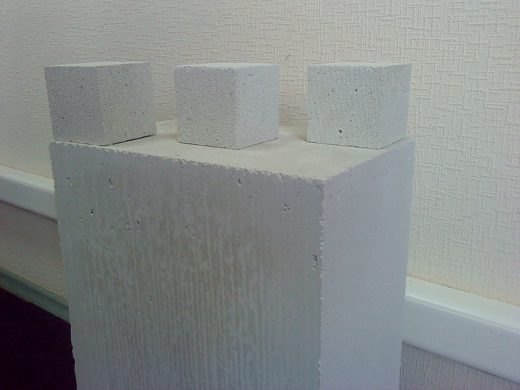Recent advancements in construction technology have resulted in concretes that have almost surmounted these constraints and are close to optimal circumstances. Modifying the microstructure of the cement paste, inducing more air to make it lighter, allowing flexibility in reducing or raising the setting pace, and so on are some of the ways used to improve its qualities.Concrete’s versatility allows it to be used for a variety of applications. However, it has several disadvantages, including low tensile strength, reinforcement corrosion, and vulnerability to chemical attacks, all of which limit its endurance.
What is Special Concrete?
“Special concrete” is described as “concrete that must meet special performance and consistency standards that are not always met by normal materials and mixing, installation and curing processes.”.” Technology is used to improve its special features that are helpful for specific types of work, such as structures, where lightweight concrete is favored for roofs to save money while maintaining the aesthetic element while taking into account the surroundings.
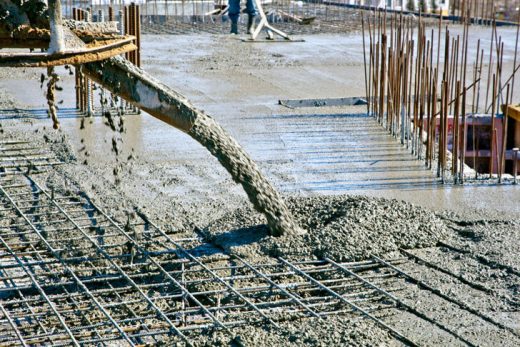
Fig 1: Special Concrete
Courtesy: aboutcivil.org
Types & Properties of Special Concrete
Lightweight Concrete:
Lightweight concrete is constructed of lightweight coarse materials like shale, clay, or slate, which give it a low density. Lightweight structural concrete has 90 to 115 lb/ft3. As a result, lightweight concrete is excellent for modern constructions with small cross-sections in the foundation It’s becoming more popular as foundation material, and it’s proving to be a viable alternative to normal concrete. On the other hand, lightweight concrete can have a compressive strength of 7000 to 10,000 psi. However, because it necessitates the addition of extra pozzolans and water-reducing admixtures to the concrete, this may weaken the mixture’s density. The Bank of America Building in Charlotte, North Carolina, is one of the most well-known structures made of lightweight concrete.
Ultra-Lightweight Concrete
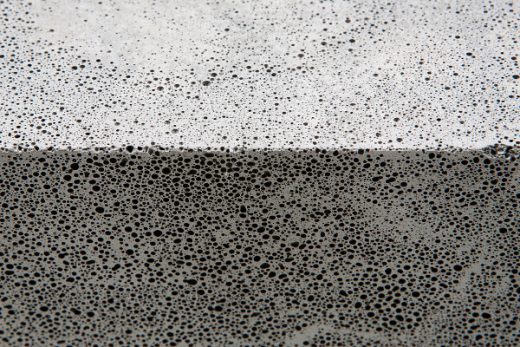
Fig 3: Ultra-Lightweight Concrete
Courtesy: specialconcretesolution.com
The density of this type of concrete is between 600 and 1000 kg/m3. It comprises cement, sand, and expanded polystyrene beads with a diameter of 6 mm. It is made by a polymerization method that requires spreading liquid styrene and a polymerization catalyst in an aqueous solution.
Mass Concrete:
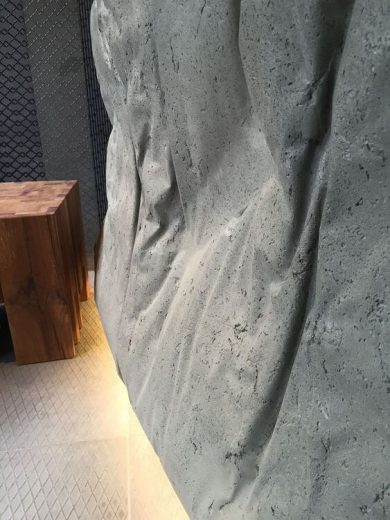
Fig 4: Mass Concrete
Courtesy: concretecivil.com
The volume of concrete is large enough to require methods to cope with heat from cement hydration and the resultant volume change. Thermal behavior is the only feature that distinguishes mass concrete from other types of concrete work. The cement-water reaction raises the temperature within a huge concrete mass, which can be fairly high if the heat is not dispersed. The restricted volume change associated with a drop in temperature when the heat of hydration dissipated may cause significant tensile stresses and strains. The Bank of America Building in Charlotte, North Carolina, is one of the most well-known structures made of lightweight concrete.
Vacuum Concrete:
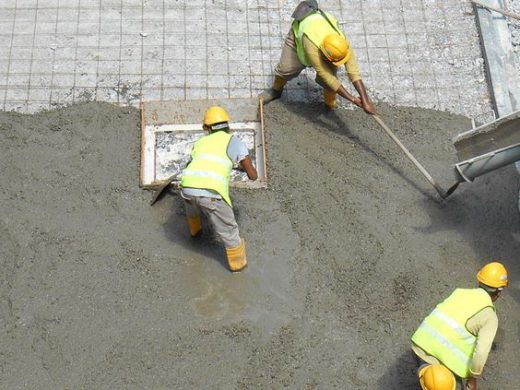
Fig 5: Vacuum Concrete
Courtesy: altasouthwaeast.com
Vacuum concrete is a mixture of concrete in which the surplus water has been evacuated to increase the strength of the concrete. Vacuum mats attached to a vacuum pump are used to remove the water. In the form-works, a concrete mix with good workability is normal. The application of a vacuum to the surface concrete results in a considerable quantity of vacuum to the surface of the concrete because fresh concrete comprises a system of water-filled channels. As a result, a considerable amount of water is drained from the concrete at a specific depth. A vacuum is created by connecting porous matting to a vacuum pump. Vacuum concrete has a stronger strength, density, lower permeability, and improved durability since the final water-cement ratio before setting is lowered.
Roller Compacted Concrete:
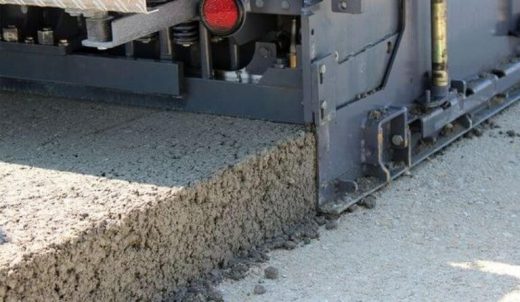
Fig 6: Roller Compacted Concrete:
Courtesy: civilplanet.com
Roller-compacted concrete comprises cement, aggregates, water, and, in some situations, water-reducing additives. It stiffens the mixture and gives it the consistency of moist gravel. Because the water content of such concrete is minimal, it is put continually. Compaction of the concrete requires a customized asphalt paver and roller. It possesses the strength and properties of traditional concrete.
The roller-compacted concrete is laid out in thin layers that allow thorough compaction. The ideal layer thickness is between 20 and 30 cm. A high plastic concrete from developing countries’ bedding mix at the installation ensures proper bonding between the new and old layers. It is necessary to obtain a compressive strength of between 7 and 30 MPa. Roller compacted concrete must be both dry enough to sustain the mass of the vibrating machinery and sufficiently wet enough to allow the cement paste to disperse throughout the mass during the mixing and consolidation process for optimal consolidation.
Fibre-Reinforced Concrete:
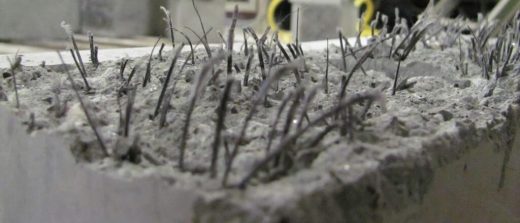
Fig 7: Fibred-Reinforced Concrete:
Courtesy: civilplanet.com
Fiber Reinforced Composite Mixture of cement is a fibrous material that adds structural strength. It consists of cement, mortar, or concrete mixed with appropriate fibers that are discontinuous, distinct, and uniformly scattered. Fibers are commonly used in concrete to prevent cracking caused by shrinkage of the plastic and drying shrinkage.
Shotcrete:
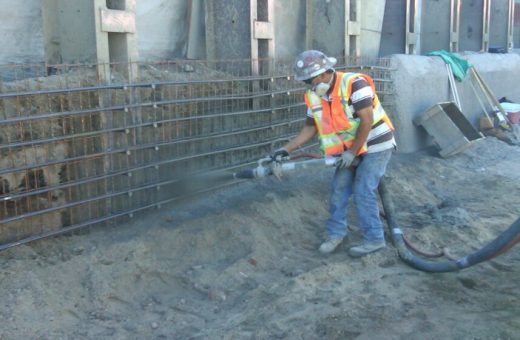
Fig 8: Shotcrete
Courtesy: ataneconsulting.com
Shotcrete is usually one part cement and four parts sand by weight, with around 7% water in the dry materials. It can also comprise admixtures and coarse aggregate. Dry mix shotcrete is made by mixing dry ingredients and adding water to the nozzle. All materials, including water, are premixed in wet-mix shotcrete. One of the benefits is the capacity to lay concrete on irregular, vertical, and overhanging surfaces that are difficult or expensive to create. Materials can be blended and pumped over large distances to where needed. The limits are the dependence on the nozzle man’s competence and training for a good application and the dust and rebound that occur during the application.
Nuclear Concrete:
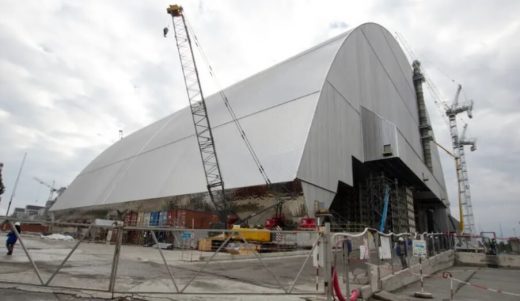
Fig 9: Nuclear Concrete:
Courtesy: scbiznews.com
Nuclear concrete is used for effective radiation shielding. Different chemicals, such as colemanite, boron glass, and borocalcite, are sometimes added to concrete to boost its neutron attenuation capabilities.
Uses of Special Concrete:
- Fiber-reinforced concrete has a variety of uses as It’s perfect for concrete applications that require resistance to plastic and drying shrinkage and better durability, service life, and lower construction costs.
- Because roller-compacted concrete can be quickly sized and sculpted, it is ideal for use in gravity and earthen dams because it requires less labor.
- Both temporary and permanent excavations are reinforced using shotcrete. It can be used to stabilize an excavation for an underground parking facility or high-rise buildings during construction, in conjunction with lagging and other types of earth anchors. Shotcrete has a wide range of uses on curved surfaces where traditional concrete laying processes are challenging. It’s used for vertical surfaces, tunnel lining, reservoirs, and swimming pools, among other things. Its great temperature resistance makes it ideal for use in chimneys, furnaces, and refractories, among other applications.
- Dams, canal locks, bridges, retaining walls, maritime constructions, bridge abutments, and other structures use mass concrete.
- Vacuum concrete is used in agricultural floor buildings, such as cold storage sheds, hydroelectric power plants, bridges, harbors, and ports towers for cooling.
- In highway building, ultra-lightweight concrete makes hollow and solid bricks, lightweight sandwiched panels, and sub-base. Because of its great thermal insulation efficiency, it is used for various applications.
- Bridge decks, piers and beams, slabs and wall elements in steel and concrete frame buildings, parking structures, tilt-up walls, topping slabs, and composite slabs on metal, fiber a deck have all built with lightweight structural concrete.
- Nuclear concrete, which can absorb radiation, is utilized in radioactive locations. Apart from that, it serves as a shield, preventing radiation from seeping outside and endangering human life.
Advantages of Special Concrete:
- Special concretes exhibit low thermal properties. Temperature regulation is also made easier in such concretes.
- In such concretes, the time setting changed by changing the ingredients, which is impossible in standard concrete because each concrete type has a set time determined by mix design.
- Corrosion-resistant concretes can be used to safeguard the reinforcements.
- Some concretes have remarkable thermal properties, making them ideal for cold areas.
- Ingredients that are injected into traditional concrete are readily available.
- It can be molded into any shape, just like regular concrete, while retaining special qualities.
- Because particular conditions are maintained in the preparation of special concrete, the construction is more durable than standard concrete.
- Special concretes can withstand harsh environmental conditions and are suitable for extreme weather.
Special Concrete Cost-Benefit Analysis;
Fiber-reinforced concrete has a high starting cost when utilized as translucent concrete. However, some businesses have devised a solution. An economic building can be considered if fiber reinforced concrete is constructed from naturally available, low-cost fibers. Furthermore, while air-entrained concrete uses fewer raw materials to manufacture, the method is more expensive than traditional concrete. The application and purpose primarily determine it. In short, it is cost-effective in the long run because it requires little maintenance and requires less labor to install. On the other hand, regular families may not prefer special concretes high initial cost since they would likely prefer to repair conventional concrete rather than use special concrete, despite its durability.
Conclusion:
However, because the mechanism is costly, more research is needed before being used widely. Special concretes are extensively employed in affluent countries because the cost is not a key consideration. Because of their special properties, special concretes are slowly gaining traction in the construction industry. , It is, nonetheless, a significant role in developing and developing countries. They are commonly employed in large industries since durability is more important than cost. Aside from these, it’s a good idea to employ unique concrete forms because it has modified features that overcome ordinary concrete’s flaws. Special concretes can also make houses safer by improving their properties. In earthquake-prone areas, such constructions will be extremely beneficial.
References:
1. Mass Concrete Topic. (n.d.). Mass Concrete Topic. https://www.concrete.org/topicsinconcrete/topicdetail/Mass%20Concrete?search=Mass%20Concrete.
2. Posts By Kishan Mudavath, V. A. (2018, September 12). What Is Special Concrete? & Types Of Special Concretes. – We Civil Engineers. we civil engineers. https://wecivilengineers.wordpress.com/2018/09/12/what-is-special-concrete-types-of-special-concretes/.
3. Fiber-reinforced Concrete – Advantages, Types, And Applications. (2020, July 24). Constro Facilitator. https://www.constrofacilitator.com/fiber-reinforced-concrete-advantages-types-and-applications/.
4. Author, G. (2021, January 13). Types Of Special Concrete: Uses, Advantages & Properties.GharPedia.https://gharpedia.com/blog/types-of-special-concrete-and-its-uses-advantages-properties/.
5. Shotcrete: What Is It & Why Is It Useful? | Easy Mix Concrete Services LLC. (2018, August 31). Easy Mix Concrete Services LLC. https://www.easy-mixconcrete.com/news/shotcrete-what-is-it-and-why-is-it-useful/.
If you have a query, you can ask a question here.



